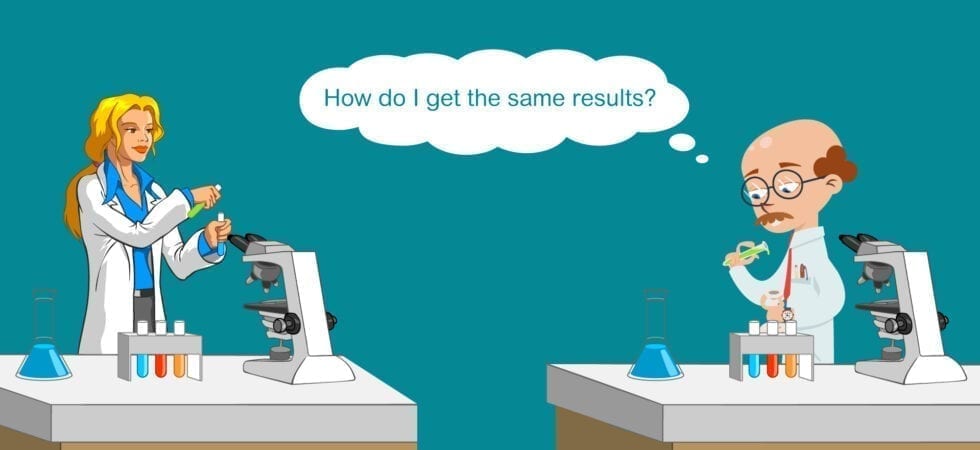
To research is to systematically investigate into and study materials and sources to establish facts and reach new conclusions. Publishing results helps the scientific community in keeping themselves abreast of new findings. While people can learn about latest happenings by reading scientific journals, if the data provided is not complete, readers and the community would not be able to reproduce a published experiment.
Though publishing has evolved with latest digital trends in furnishing content, scientific publishing for journals has not evolved much in terms of what data is provided to readers. Consequently, more than 60–90% of the results of all published articles are not reproducible. With a lack of consistency in results, no effective knowledge transfer takes place and the research is at best, non-productive.
One might wonder why research has to be reproducible. Basically, research is all about creating new results. If scientists are not able to create the same results, then either the methodology of research is wrong or the results, themselves, are not true. When scientists are working on a problem in real-time and are unable to reproduce the results, it leads to poor productivity for institutions and significant delays for the society at large. All of this can be attributed to ineffective knowledge transfer due to the current formats followed in journals.
When scientists are unable to re-create the experiments at their end, they could be forced to travel to the original authors’ place so they can see the experiment being performed. The reason is, visualization is an effective mechanism to transfer knowledge. Despite the fact that technology has advanced a lot since 1665, knowledge transfer methodologies used in journal publishing has not changed much.
Visualization in biology and physical sciences and interactivity in computer science can be employed to overcome the challenge in Reproducibility of Results. Video articles can be peer-reviewed and structured normally as would a print article would be. Computer science articles can include interactive and executable code, relevant data, and visualization tools to enhance understanding and reproducibility.
The new features would require technical expertise, revisiting turnaround times, additional financial spend, and changes in established publishing workflows. It would increase entry barriers, improve perception, strengthen the existing business models, and finally help the scientific community and the community at large.
Having worked with the publishing industry for more than 2 decades and helped worldwide publishers transition from traditional print to digital workflows, Integra is uniquely poised to help you make this transformation. Let’s re-create the future of scientific publishing together.
References:
https://scholarlykitchen.sspnet.org/2017/05/24/reproducible-research-just-not-reproducible/
http://www.pb
News & Insights

Enabling Accessibility in Scholarly Publishing – A Conversation with Lakshmanan Thirumoorthy

Navigating the European Publishing Landscape – A Conversation with Bart – Part 2

